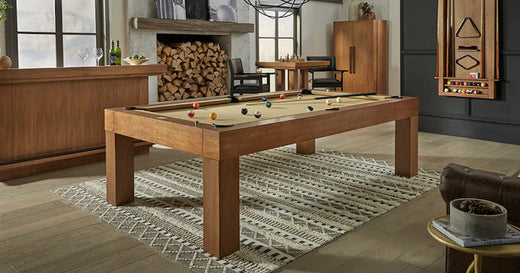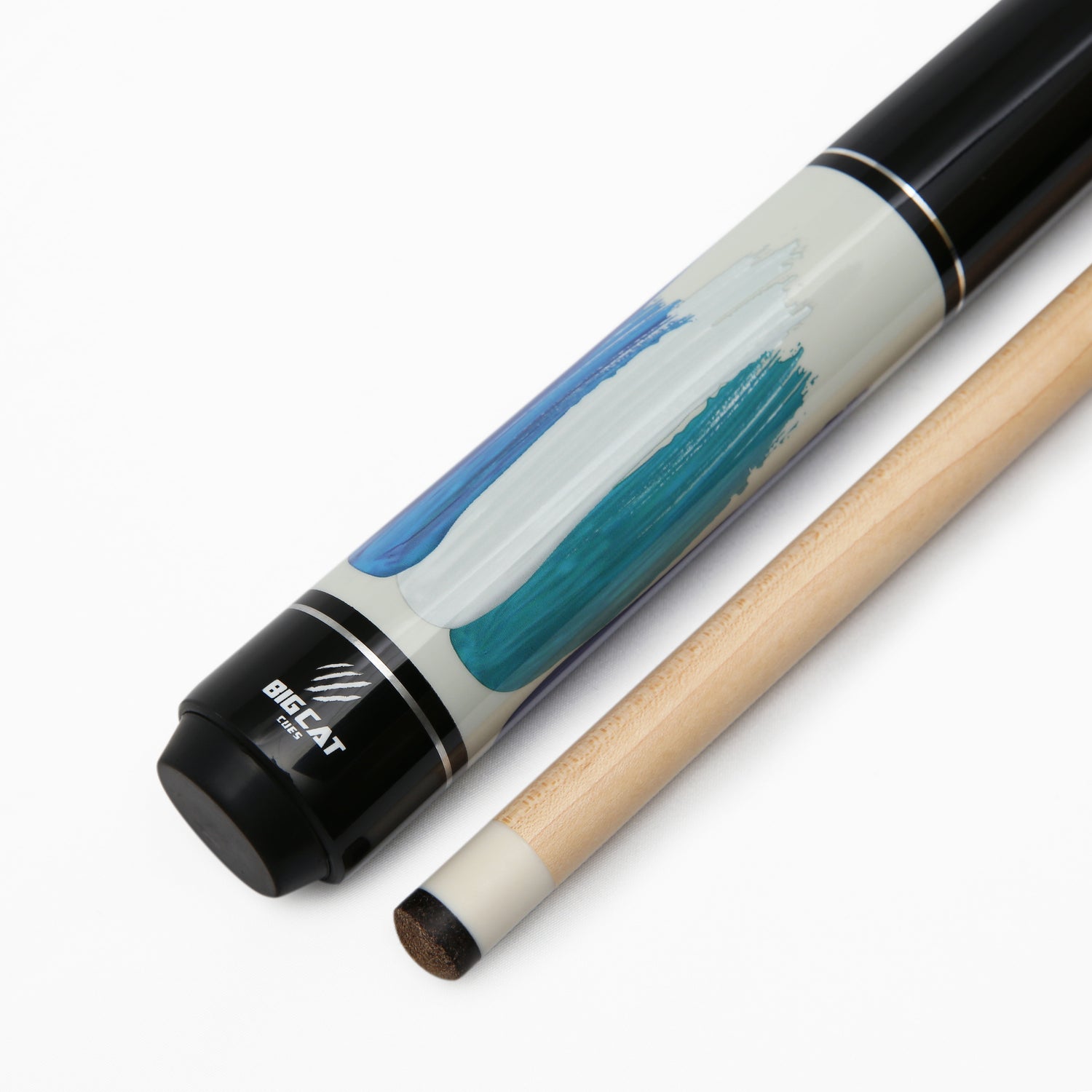
How To Build A DIY Pool Table? 9 Steps to Make Your Custom Pool Table
A DIY pool table project is a fantastic way to combine your love for billiards with your woodworking skills. However, building your custom pool table can take more work than you think. Therefore, we'll guide you through 9 crucial steps to construct one from scratch.
By the end of this article, you'll have a beautiful, fully functional pool table you can proudly call your own.
What is a DIY Pool Table?
A DIY pool table is a billiards table created from raw materials rather than purchasing a pre-made one. Choosing to build a pool table can be a rewarding and enjoyable project for many reasons:
- Customization: When building your pool table, you have complete control over its design, size, style, and features. You can make one that perfectly matches your preferences and space.
- Cost Savings: Buying a high-quality pool table can be expensive, while making your own allows you to save costs. Or using your budget more effectively by focusing on materials and features that matter most to you.
- Skill Development: You'll learn about measuring, cutting, assembling, and finishing wood, which can be valuable skills for other DIY projects.
- Upgrade and Repair: If you already have an old or damaged pool table, starting on a DIY project allows you to refurbish and upgrade it. The process will extend the life of your existing table while giving it a fresh, customized look.
9 Steps to Make a DIY Pool Table
You can watch this DIY tutorial to visualize how to build a pool table
Building a new pool table requires time, effort, and dedication. Let's break down the process into 9 steps to help you prepare for this exciting project.
Step 1: Preparing materials and tools
A pool table is like a puzzle of many pieces, such as rail cushions, pockets, the playing surface, cloth, slate, and more. You'll need to prepare all the materials for these parts to build one. Refer to this list of the stuff you might need:
- A big sheet of slate or MDF (medium-density fiberboard) for the pool table surface
- 6 pieces of wood for the pool table legs
- 4 pieces of wood for the pool table frame
- 8 pieces of wood for the pool table railings
- 8 pieces of rubber or foam for the pool table cushions
- 6 pieces of leather or plastic for the pool table pockets
- Felt or cloth to cover the pool table
- Some strong glue or cement
- Drill, saw, hammer, nail gun, sander, level, tape, pencil, chalk, razor blade, tip shaper, etc.

Preparing necessary materials
Regarding the pool table surface, you can choose slate or MDF, depending on your budget and how much room space you have. Slate is fancier but costs more and is much heavier, while MDF is lighter and easier to handle.
However, you might have to replace MDF surfaces every few years, especially if the table is in a place with a lot of moisture in the air.
Step 2: Make a design for the pool table
Learning how to make pool table designs involves careful planning and measurements. There are various sizes, including 6-foot, 7-foot, 8-foot, or 9-foot pool tables.
However, if you're making a DIY gaming table for your home, it's a good idea to go with an 8-foot pool table. This size means it's 8 feet long and 4 feet wide, with a playing area that measures 92 inches by 46 inches. Ensure you keep the length-to-width ratio at 2:1.

Your room should be at least 7 feet longer and 7 feet wider than the table, requiring you to have at least 3.5 feet of space on each side of the table. This way, you'll have plenty of room to move around and take your shots comfortably.
One more thing to remember is the height of your pool table. It should be between 29 and 31 inches tall from the ground to the actual playing surface.
Step 3: Construct the pool table legs
The third step is making the pool table legs using the wood pieces you have prepared. You can make the legs in any shape, such as square, round, or tapered.

Construct the pool table legs
Don't worry if you want to have carefully carved legs but lack time and skills. We suggest to buy legs outside for the best result.
Start by drilling holes on the top of each leg, where you will attach them to the frame later. Also, drill holes on the bottom of each leg, as you will insert some screws or bolts to adjust the height and level of your pool table here.
See more: How Much Is A Pool Table?
Step 4: Create the frame
The fourth step of pool table custom is to create the frame to hold your pool table surface. This frame should look like several boxes stacked together, with the mission to provide solid support for your playing surface.
*Optional: Place a sub-frame underneath the surface to make things sturdier.

Image Source: JimmyDiresta Youtube
One vital task of this frame (or sub-frame) is to cover up the spots where you put screws to hold your playing surface in place. Consider using thicker and stronger wood if you're not using a sub-frame. Follow these basic steps to create the frame:
- Put the pieces of wood together, cut them to the right size, and make dado slots.
- Smooth any rough edges and check if the pieces fit perfectly.
- Once everything looks good, glue sticks the frame parts together. You can also use clamps to hold them while the glue dries. If you want to be able to take the table apart later, use screws and brackets instead of glue.
Step 5: Install legs into the frame
Keep going with our DIY pool table process; it's time for assembling: install the legs into the frame. During this step, you should align each leg with each frame corner and secure them with screws or bolts. Use a level to ensure that your frame is flat and even.

Image Source: JimmyDiresta Youtube
Also, adjusting the screws or bolts on the bottom of each leg ensures your pool table is stable and balanced.
Step 6: Place the pool table surface
If you plan to use slate, ensure it comes with an MDF backer to allow the slate to rest on the sub-frame. Gently slide the parts into their designated positions and fasten them with screws, being cautious not to split the beams during the process.

Image Source: JimmyDiresta Youtube
Once everything is in place, remember to check if the surface is level. Highly recommend testing with a mechanical leveler.
When finding any unlevel spot, make some adjustments using hardwood shims. This step explains why having three slate slabs, rather than one large piece, can simplify the process. Sometimes, when the slate pieces fit together tightly, you can skip using melted beeswax to fill the gaps between them.
Then, cut the pockets yourself – they won't come pre-made. According to the WPA guidelines, these pockets should have an opening (or "mouth") that measures between 4.5 inches and 4.625 inches wide, measured between the corners of each bumper.
Since the pockets won't be perfect circles, try cutting them out using a jigsaw. Think about the shape of the pockets you want and how forgiving you want them to be when balls are sinking into them.
To attach the MDF to the playing surface, use screws that will sit flush with the surface after you've cut the holes. It is a better choice than glue because working with screws is simpler when the wood needs fixing.
Step 7: Create the railings
After placing the surface, use the wood pieces to create the railings for your pool table custom.

Image Source: JimmyDiresta Youtube
Each rail comprises four parts: the actual rail, the feather strip, the bumper, and the blind. Pay attention to the holes where you'll attach the rails to your pool table and how to connect the pockets. Use super glue or contact cement to attach the bumpers to the felt, ensuring they're in the correct position.
Besides, as bumpers harden with time, check out our detailed guidelines on making them softer. It ensures your pool table remains in optimal condition for enjoyable play.
Step 8: Felt the pool table surface

Image Source: JimmyDiresta Youtube
The eighth step is to felt the pool table surface, using the felt or cloth you prepared. To do this step, cut the felt or fabric according to the size of your pool table, leaving some extra material on each side.
You should place the felt or cloth on the slate or MDF sheet and smooth it with your hands. When stretching and stapling the felt on the frame's underside, ensure no wrinkles or creases. After that, cut holes in the felt or cloth where the pockets will be.
What felt color to use is entirely your decision. A blue or red felt instead of the traditional green will give your pool table an impressive appearance.
Step 9: Add the finishing touches
You are finally in the final step: add the finishing touches to your DIY pool table. To make this happen, use any accessories you want. We have some suggestions:
- Secure the railings with bolts.
- Install the pockets.
- Mark the lines on the table.
- Shape and scuff the tip of your cue stick.
- Add other accessories to your pool table, such as a chalk holder, a ball rack, a cue rack, a scoreboard, and a light fixture.

Add any finishing touches you want to mark
And congrats! You have now successfully built your DIY pool table. It's time to choose your favorite pool cue and enjoy playing with your custom-made pool table!
Frequently Asked Questions
How to soften pool table bumpers?
Pool table bumpers are rubber or foam cushions attached to your pool table's railings. They affect the bounce and speed of the balls when they hit them.
If your pool table bumpers are too hard or soft, they might ruin your game and damage your balls. To soften pool table bumpers, use a hair dryer or a heat gun to warm them up. Follow the guidelines we have shared above for more details.
How to refelt a pool table?
The pool table felt is the covering placed on top of your pool table's slate or MDF sheet. It affects the smoothness and friction of the balls when they roll on it.
If your pool table felt is worn out, torn, stained, or faded, you can refelt it by following this step-by-step instructions.
How do you assemble a pool table?
Pool table assembly is the process of putting together all the parts of your pool table, including the legs, frame, surface, railings, cushions, pockets, and covering.
For those who buy a pre-made pool table, follow these steps:
- Upack all the parts of your pool table.
- Begin by fastening the legs to the frame with screws or bolts.
- Glue the slate or MDF sheet on top of the frame.
- Attach the railings to the frame.
- Felt the surface and cut holes in the pockets.
- Attach the cushions and pockets to the railings with glue or cement.
Can you make a pool table at home?
Yes, you can make a pool table at home. You'll need a flat surface, wooden frame, slate or MDF top, felt covering, cushions, and pockets. Follow the tutorial above on how to do it.
How long does it take to build a pool table?
To build a pool table, it would typically takes 20-40 hours for a professional constructor. For beginners, it might take longer. The time also depends on the table's size and complexity of design.
Does a pool table add value to a home?
A pool table can add entertainment value to a home, especially when hosting a party or inviting other people to come over. However, it doesn't significantly increase the home's monetary value. It may be a selling point for game enthusiasts but could be seen as taking up space by others.
If you choose to build a customized pool table, follow the steps shown in this article. These guidelines are all we have to offer for now and follow us for more valuable content on pool cues and other related topics in the future. Good luck with your DIY pool table project, and Big Cat hope it brings you countless hours of fun and enjoyment!
See more related articles


